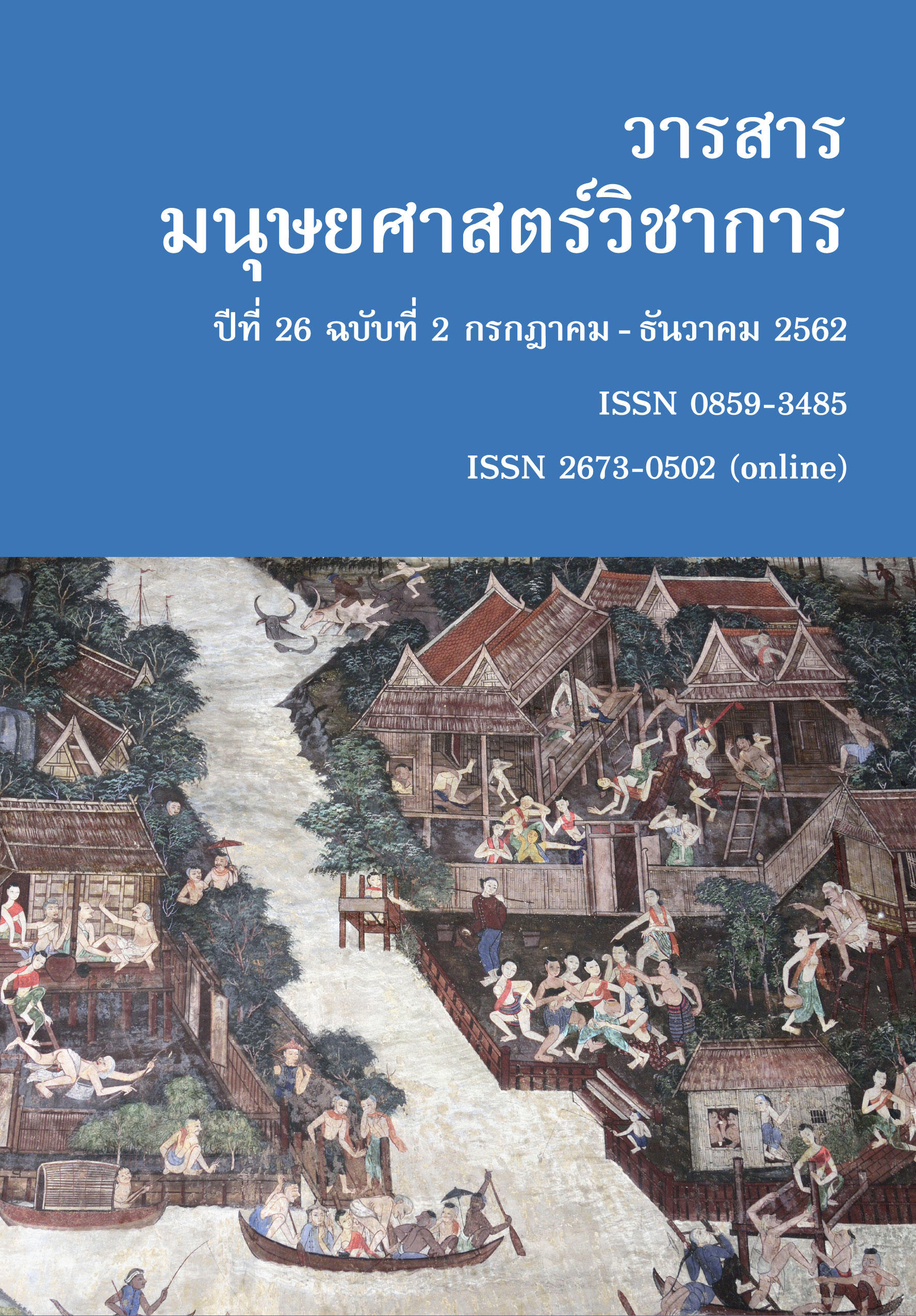พระราหู เทพเจ้าแห่งโชคและโภคทรัพย์ การสร้างสรรค์ความหมายใหม่ของสัญลักษณ์พระราหูในสังคมไทย
Main Article Content
Abstract
The purpose of this paper was to study the resignification of the Rahu symbol in Thai society by examining Rahu sculptures in the central and eastern regions of Thailand which have been cast in increasingly large numbers in contemporary (1997-2017) Thai society.
According to the research results, it was evident that Rahu previously symbolized maleficence or misfortune, as reflected by the ritual of Rahu expulsion that was performed during a solar eclipse and the curse-dispelling ritual that was performed during Rahu’s malefic intervention or maturity according to the principles of astronomy. Nonetheless, at present, Rahu has been re-signified to symbolize fertility, abundance, fortune, and life transitions towards prosperity and happiness. Such resignification is accounted for by Thai society’s pursuit of a mental anchor, specifically, an immediate remedy for life crises. The rational behind this is that since Rahu is considered to be the cause of life suffering, the worship of Rahu serves as a means of propitiating him so that he forebears inflicting misfortune, punishment, and woe upon humans and instead bestows happiness and fulfillment. Such reasoning was a factor contributing to the construction of large Rahu sculptures of various forms in response to the needs of Rahu worshippers. At the same time, creators of Rahu images have also redefined the Rahu symbol by identifying him as the god who bestows happiness and prosperity on humans rather than misfortune and maleficence.
Article Details
References
ปฐม หงษ์สุวรรณ. (2542). การวิเคราะห์ตำนานสุริยคราสและจันทรคราสของชนชาติไท (วิทยานิพนธ์มหาบัณฑิต สาขาภาษาไทย). จุฬาลงกรณ์มหาวิทยาลัย, กรุงเทพฯ.
ประเสริฐ รุนรา. (2560). โครงการสัญลักษณ์พระราหูในงานศิลปะ: การสืบทอด การสร้างสรรค์และความสำคัญด้านคติความเชื่อในสังคมไทย. รายงานวิจัยทุนสภาวิจัยแห่งชาติ.
วันรักษ์ มิ่งมณีนาคิน. (2551). เศรษฐศาสตร์เบื้องต้น เศรษฐศาสตร์สำหรับบุคคลทั่วไป. กรุงเทพฯ: มหาวิทยาลัยธรรมศาสตร์.
ศิราพร ณ ถลาง, บรรณาธิการ. (2558). “ประเพณีสร้างสรรค์” ในสังคมไทยร่วมสมัย (พิมพ์ครั้งที่ 2). กรุงเทพฯ: ศูนย์มานุษยวิทยาสิรินธร (องค์การมหาชน).
สุกัญญา สุจฉายา. (2548). พิธีกรรม ตำนาน นิทาน เพลง: บทบาทของคติชนกับสังคมไทย. กรุงเทพฯ: โครงการเผยแพร่ผลงานทางวิชาการ คณะอักษรศาสตร์ จุฬาลงกรณ์มหาวิทยาลัย.
อคิน รพีพัฒน์, ม.ร.ว.. (2551). วัฒนธรรมคือความหมาย: ทฤษฎีและวิธีการของ คลิฟฟอร์ด เกียร์ซ. กรุงเทพฯ: ศูนย์มานุษยวิทยาสิรินธร (องค์การมหาชน).
เอกรินทร์ พึ่งประชา. (2545). พระราหู: “ประเพณีประดิษฐ์” แห่งวัดศีรษะทอง (วิทยานิพนธ์มหาบัณฑิต สาขามานุษยวิทยา). มหาวิทยาลัยธรรมศาสตร์, กรุงเทพฯ.
Keesing, Roger M. and Keesing, Felix M. (1971). New Perspectives In Cultural Anthropology. New York: Holt, Rinehart and Winston.

